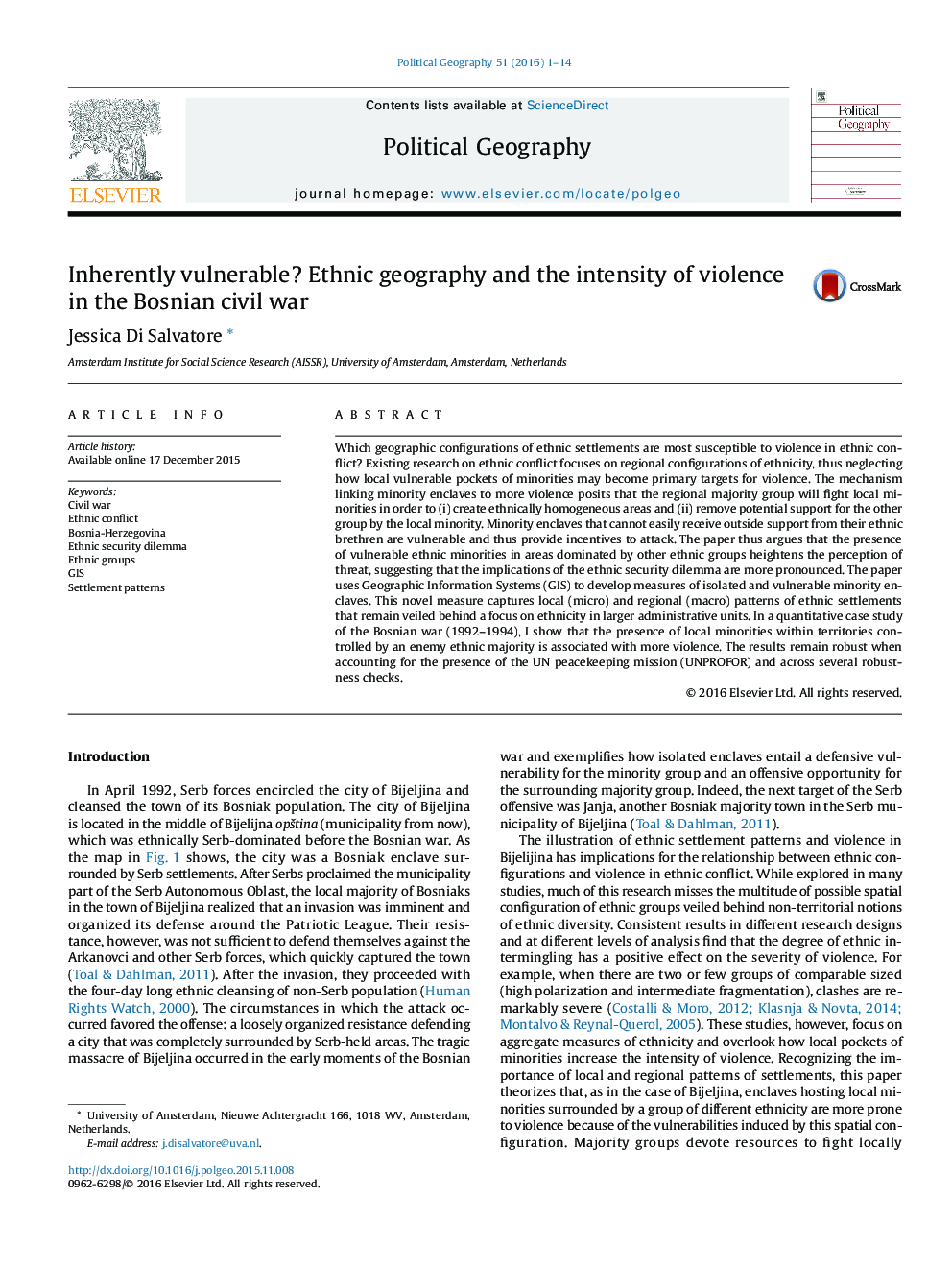| Article ID | Journal | Published Year | Pages | File Type |
|---|---|---|---|---|
| 1061850 | Political Geography | 2016 | 14 Pages |
Which geographic configurations of ethnic settlements are most susceptible to violence in ethnic conflict? Existing research on ethnic conflict focuses on regional configurations of ethnicity, thus neglecting how local vulnerable pockets of minorities may become primary targets for violence. The mechanism linking minority enclaves to more violence posits that the regional majority group will fight local minorities in order to (i) create ethnically homogeneous areas and (ii) remove potential support for the other group by the local minority. Minority enclaves that cannot easily receive outside support from their ethnic brethren are vulnerable and thus provide incentives to attack. The paper thus argues that the presence of vulnerable ethnic minorities in areas dominated by other ethnic groups heightens the perception of threat, suggesting that the implications of the ethnic security dilemma are more pronounced. The paper uses Geographic Information Systems (GIS) to develop measures of isolated and vulnerable minority enclaves. This novel measure captures local (micro) and regional (macro) patterns of ethnic settlements that remain veiled behind a focus on ethnicity in larger administrative units. In a quantitative case study of the Bosnian war (1992–1994), I show that the presence of local minorities within territories controlled by an enemy ethnic majority is associated with more violence. The results remain robust when accounting for the presence of the UN peacekeeping mission (UNPROFOR) and across several robustness checks.
